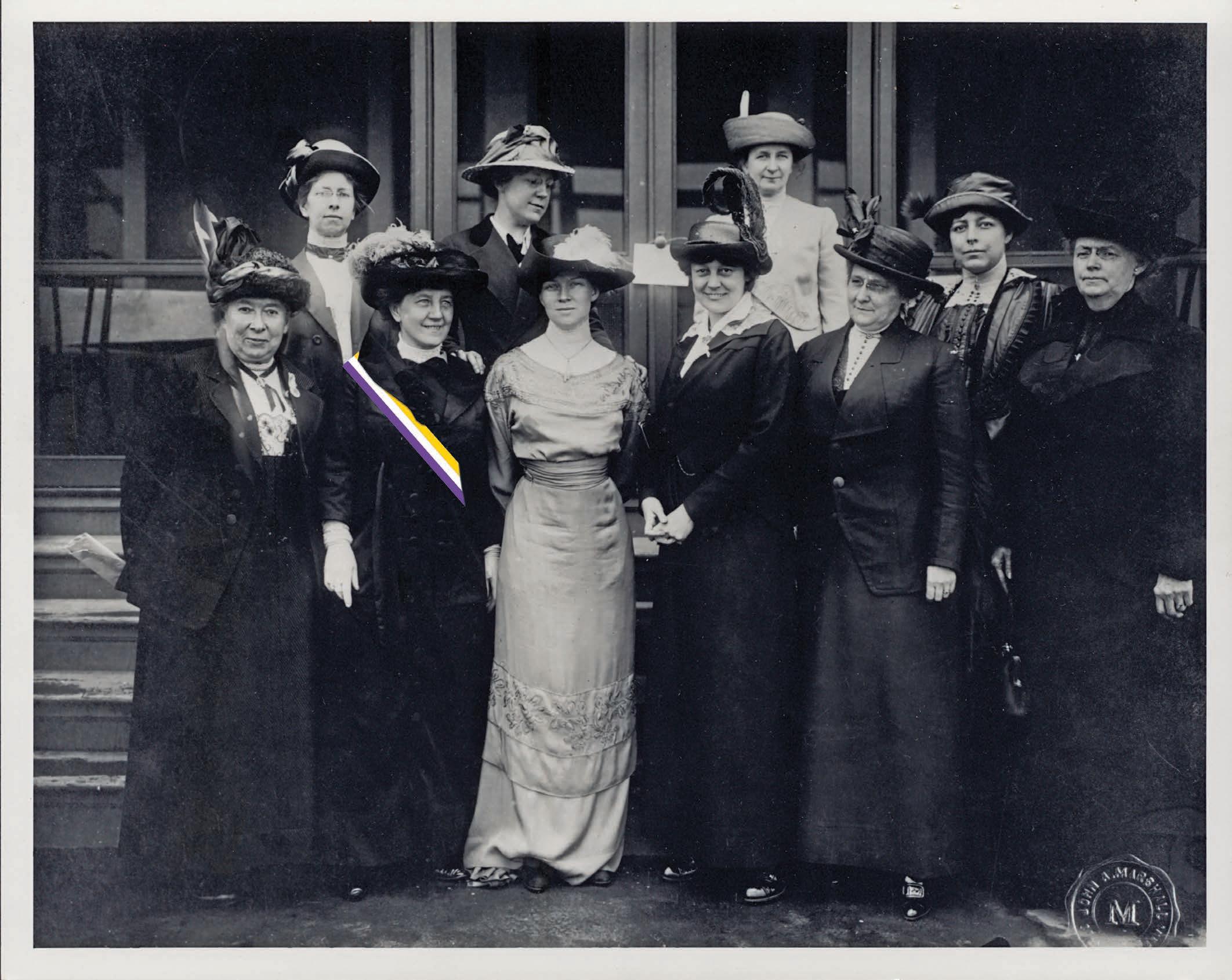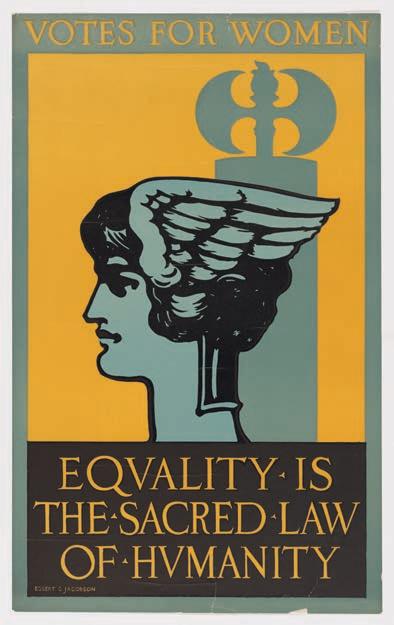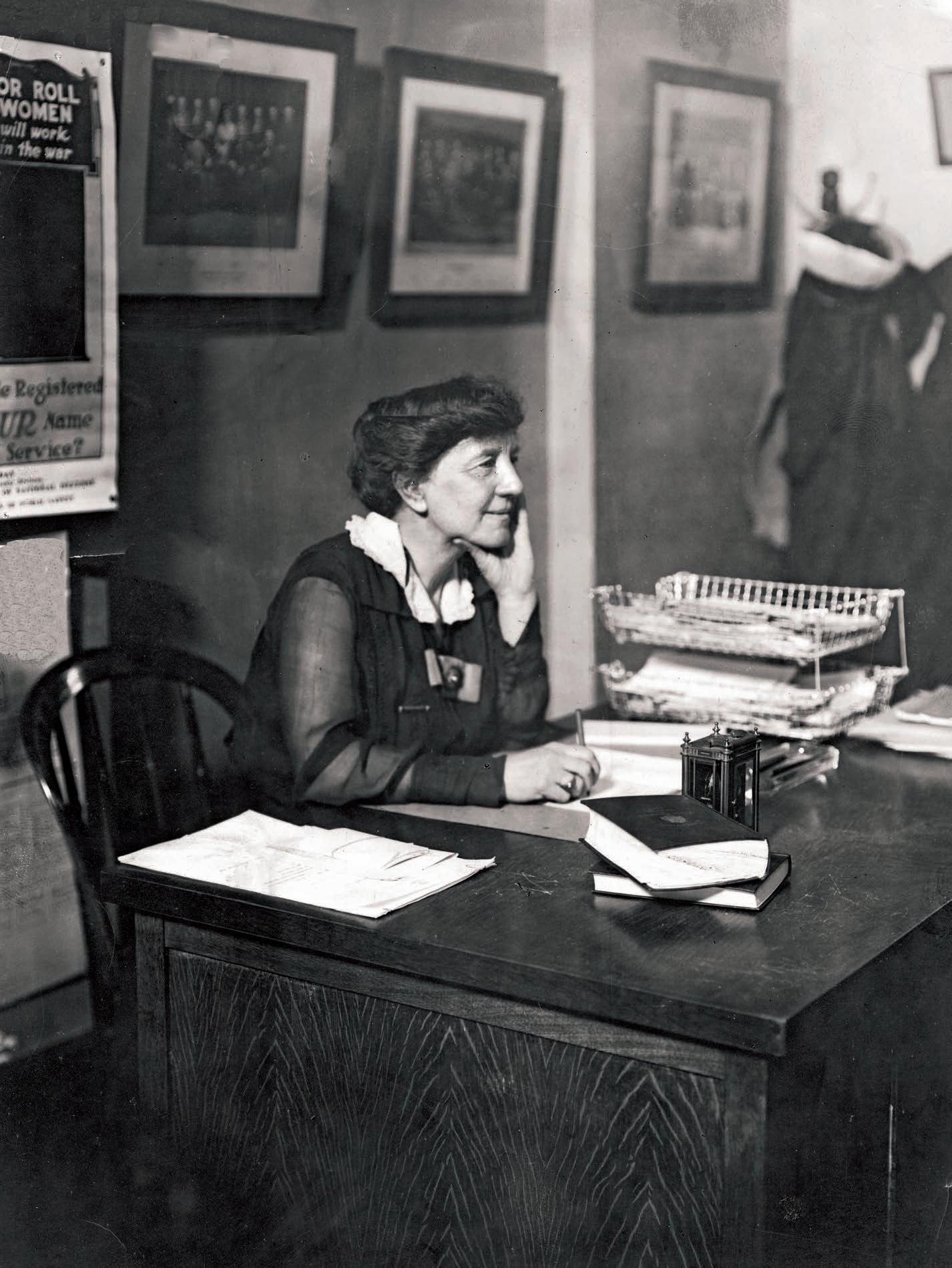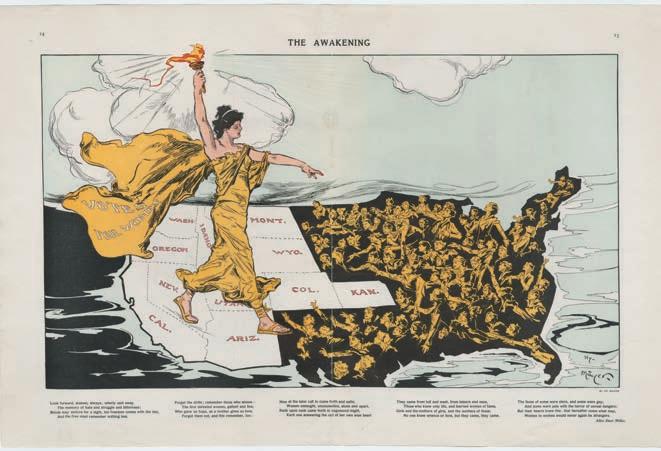
6 minute read
Caroline and Her Convictions
Caroline Ruutz-Rees and the Connecticut Suffrage Movement
By Dr. Kate Lemay ‘97

Caroline Ruutz-Rees, 2nd from left, next to Mrs. Katharine Hepburn in white. Connecticut Woman’s Suffrage Association, 1912. Purple, white, and gold were the colors of the American suffrage movement.
Connecticut State Library & State Archives
Caroline Ruutz-Rees (1865–1954), the founding headmistress of Rosemary Hall, prioritized academic achievement, athletics and student governance for her students. The Choate Rosemary Hall community has long celebrated Ruutz-Rees for her pioneering leadership. Her visionary school was founded in 1890 by Mary Atwater Choate in Wallingford, six years before the founding of The Choate School for boys. Along with her Rosemary Hall leadership, she earned her Ph.D. and published authoritative scholarship on French literature. She also adopted and raised two children on her own. Ruutz-Rees remained headmistress until 1938, and guided the School to be one of the most progressive of its era, nurturing independence, athleticism and ambition in young women.
Ruutz-Rees was committed to empowering women. She was an important advocate for women’s suffrage, leading a variety of committees, both national and local. She was one of the faces of the movement, giving speeches and exemplifying women’s resolve for equality. In 1919, Ruutz-Rees marched with 100 other Connecticut women at the State Capitol, delivering a petition supporting women’s suffrage with 27,000 signatures of Connecticut citizens. It was an uphill battle: Connecticut didn’t grant women the right to vote in all elections until it was forced to by federal law, the 19th Amendment, ratified in August 1920. Yet Ruutz-Rees persisted in striving for gender equality.

Lithograph by Egbert C. Jacobson (1890-1966) ca. 1903–1915.
The Arthur and Elizabeth Schlesinger Library on the History of Women in America, Radcliffe Institute for Advanced Study, Harvard University.
In addition to her fight for suffrage, Ruutz-Rees focused on a variety of equality measures. She supported other social reforms related to gender, such as child hygiene laws, ninehour labor laws for women, and the opening of jury duty to women. Indeed, Ruutz-Rees was a radical, especially in her approach to women’s health, even allowing the Greenwich Committee for Maternal Health to use a house owned by Rosemary Hall (then located in Greenwich on Lake Avenue) as headquarters for an illegal birth control clinic in the 1930s. At Rosemary Hall, Ruutz-Rees implemented self-government, which she felt would develop a “sense of justice, a sense of rights of others, and a sense of responsibility.” Ruutz-Rees’s reformist views about young women’s education may have been shocking during a time when women with roles outside the home were thought to be bizarre.
Even after women won the right to vote, Ruutz-Rees aimed to achieve total equality between men and women: in 1922, she thought seriously about running for Congress from Connecticut’s Fourth District. She declared,
By this measure, we have made enormous progress. Women, who rarely had a political voice 100 years ago, now serve in government in historic numbers. Today, more than 120 women are in the 116th Congress. Yet this is not to say that women, or women’s history, is taught in a way that would satisfy the pioneering educator Ruutz-Rees.

Miss Ruutz-Rees was absent from school during the 1918 school year while she was engaged in war work as chairman of the Woman’s Council of National Defense of Connecticut.
While curating and preparing the exhibition “Votes for Women: A Portrait of Persistence,” now on view at the Smithsonian National Portrait Gallery in Washington, D.C., I came to understand two things. First, not all of my history classes presented women’s history as American history. Women’s stories were marginalized; too often they were taught as an afterthought. This is upsetting. Imagine a woman’s history framing the Revolutionary War, all the American Presidents, the Civil War, and so on. It would be a rich narrative, full of complexity, and bound to captivate students. Where are the women in these stories? In a 2017 survey of the United States Social Studies Standards for public schools, only 15 women are named more than 10 times. Nine states allotted precious space to fictional women like Rosie the Riveter. For this reason, I endeavored to feature as many named women as wall space would allow – more than 60 portraits, with biographies, are on view. Second, I saw the extent to which women’s history is American history. Looking closely at the history of abolitionism and its intersections with the women’s movement, I realized that my exhibition would be as much a study of the Constitution and the political machine as it is a long social history featuring the activism of largely forgotten women. The suffrage movement – among the longest social reform movements in American history – wasn’t pinpointed as such until the ratification of the 15th Amendment. After its ratification in 1870, all male citizens, regardless of previous servitude, were granted the right to vote. Many white suffragists were offended that formerly enslaved, illiterate African American men had a political voice, whereas educated women did not.
In 1919, Ruutz-Rees marched with 100 other Connecticut women at the State Capitol, delivering a petition supporting women’s suffrage with 27,000 signatures of Connecticut citizens.

Connecticut women marching to the State Capitol in Hartford, 1919.
Part of the latter group then came to embody an ironic paradox: feeling threatened, women like Elizabeth Cady Stanton and Susan B. Anthony chose to embrace racism; they felt that white, educated women should have the right to vote before African American men. Voicing their opinion split the suffrage movement into two; their African American partners in the abolitionist movement, of course, rejected their claims to superiority. Frances Ellen Watkins Harper, for example, rebuked Stanton and Anthony during the 1869 meeting of the American Equal Rights Association, declaring,
Clearly, women’s rights in the United States is a complicated history – and it mirrors American society, values, and creates teachable milestones. These milestones are especially important when attempting to understand the present social and political climate. So why don’t we know more about it?

”The Awakening” by Henry Mayer, 1915, for Puck magazine.
Puck magazine
One problem is the imbalance of gender in professional historians: approximately 70 percent of historians are male, and as a result, women’s history is greatly undervalued. Indeed, until my catalogue Votes for Women: A Portrait of Persistence, published to accompany the National Portrait Gallery exhibition, there had not been a single book covering the whole of the suffrage movement since Eleanor Flexner’s A Century of Struggle, published in 1959. Few books present the national strategy of state suffrage referendums in a way that is understandable to people unfamiliar with how our government really works. Analysis of the federal government – specifically when and how it imposed voting rights legislature to supersede states’ rights claims – is murky, at best. The social reactions of the South to the 14th and 15th Amendments, and their direct relationship to that of the 19th, is too often misunderstood. Race relations, the threat of the enfranchisement of African American women, period prejudice and pragmatism, Southern sovereignty versus the federal government, defensive reactions to Reconstruction – all these things fed the anti-suffrage machine, and not nearly enough scholarship has addressed this complex history in a way that is clearly written or factually accurate. Historians have their work cut out for them, especially since we are being charged more and more to offer intersectional, inclusive accounts.
For more than 80 years, women citizens organized for the right to vote, agitating first in their states or territories and then through petitioning for a federal amendment. The centennial offers a moment for us to reconsider biographies of women like Caroline Ruutz-Rees, and offer up intersectional frameworks that are critical to understanding the complexity of women’s roles in the United States. We have momentum, for museums across the country are seeking to understand women’s history, and major initiatives like Because of Her Story at the Smithsonian Institution are addressing the large gap in understanding women, their history, their health, and their value in society. As the suffragists would say: Onward!
Dr. Kate Clarke Lemay ’97 is a historian at the National Portrait Gallery and co-coordinating Curator of the Smithsonian American Women’s History Initiative. Lemay authored Triumph of the Dead: American Cemeteries, Monuments and Diplomacy in France (University of Alabama Press, 2018) and Votes for Women: A Portrait of Persistence (Princeton University Press, 2019); the latter accompanies the exhibition of the same name on view at the National Portrait Gallery through January 5, 2020.

